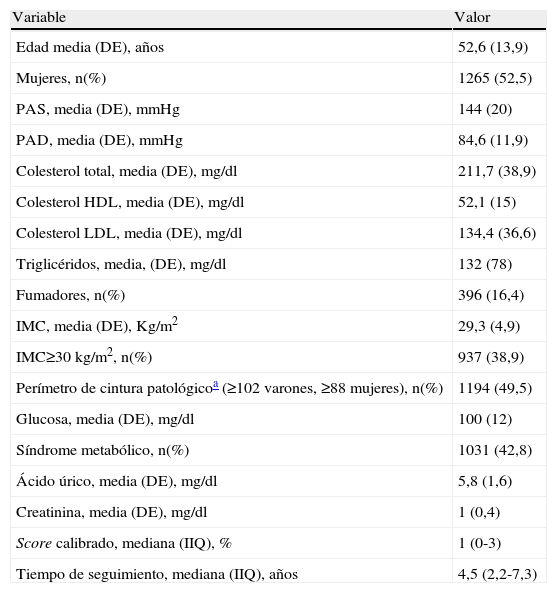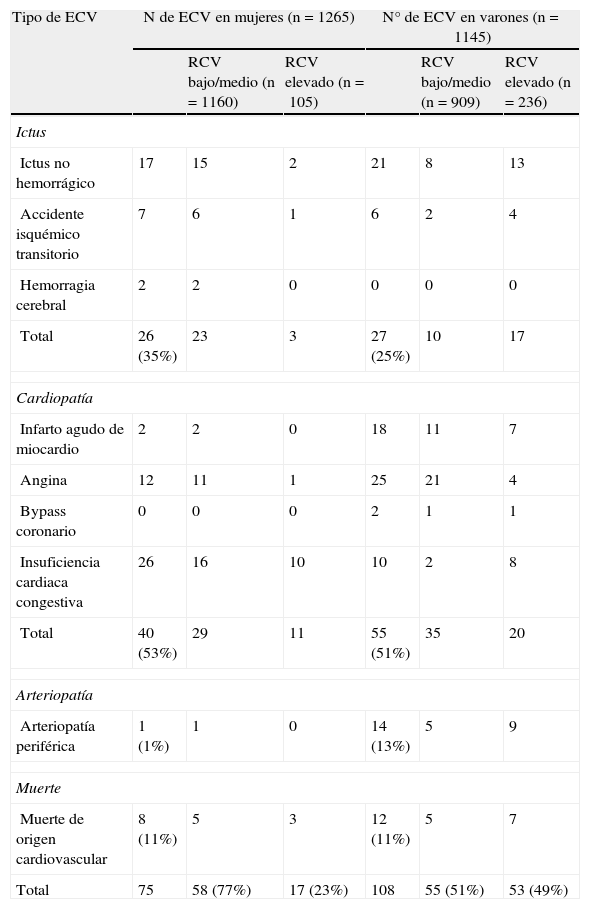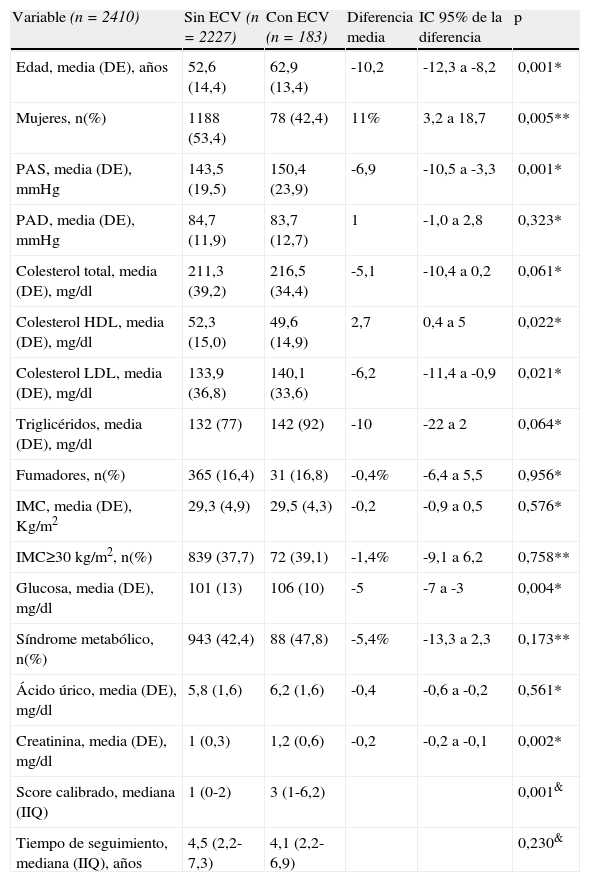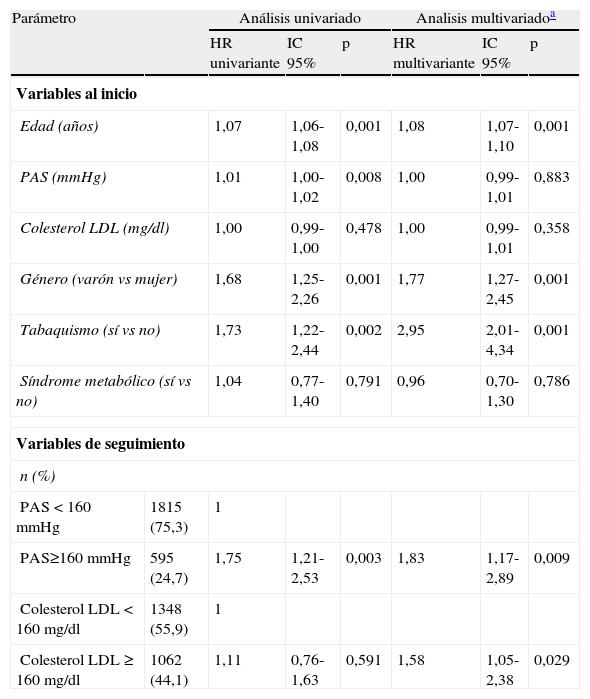Valorar la importancia del síndrome metabólico (SM) como indicador predictivo de enfermedad cardiovascular (ECV) en hipertensos en prevención primaria.
Pacientes y métodoEstudio longitudinal retrospectivo en 2410 hipertensos no diabéticos (52% mujeres, 43% con SM), sin historia previa de ECV, con una mediana de seguimiento de 4,5 (intervalo intercuartílico [IIQ] 2,2-7,3) años, con un seguimiento total de 13096 pacientes-año.
ResultadosLos pacientes con SM no tuvieron más riesgo de presentar una primera ECV durante el seguimiento (hazard ratio [HR] 1,19; intervalo de confianza del 95% [IC 95%] 0,89-1,58; p=0,292). Un total de 183 (7,5%) pacientes tuvieron una ECV, 88 en los de SM y 95 en el resto, con una incidencia similar, 15,4 pacientes-año (IC 95% 12,4-19,0) y 13,0 pacientes-año (IC 95% 10,5-15,9), respectivamente (p=0,279). En un análisis multivariado, la edad (HR 1,08; IC 95% 1,07-1,10; p=0,001), ser varón (HR 1,77; IC 95% 1,27-2,45; p=0,001) y tabaquismo (HR 2,95; IC 95% 2,01-4,34; p=0,001) al inicio del seguimiento, junto a presión arterial sistólica ≥160mm Hg (HR 1,83; IC 95% 1,17-2,89; p=0,009) y colesterol unido a lipoproteínas de baja densidad (colesterol LDL) ≥160mg/dl (HR 1,58; IC 95% 1,05-2,38; p=0,029) durante el seguimiento, se asociaron a la aparición de ECV.
ConclusionesEl diagnóstico de SM no mostró una aportación significativa a los factores clásicos de riesgo cardiovascular como predictor de ECV, en hipertensos no diabéticos en prevención primaria. La presión arterial sistólica ≥160mm Hg y el colesterol LDL ≥160mg/dl durante el seguimiento sí que se asociaron a la aparición de ECV.
The aim of this study was to assess the impact of metabolic syndrome (MS) as a predictor of cardiovascular events (CVE) in hypertensives in primary prevention.
Patients and methodsThis retrospective study involved 2410 non-diabetic, hypertensive patients (52% women, 43% with MS), without previous CVE. The total follow-up was 13096 patient-years with a median of 4,5 years (IIQ; 2,2-7,3).
ResultsPatients with metabolic syndrome did not have more risk of CVE (HR 1,19; CI 95%:0,89-1,58; p=0,292), 183 patients had a CVE, 88 in patients with MS (15,4; CI 95%:12,4-19,0 patients-years), and 95 in patients without MS (13,0; CI 95%:10,5-15,9 patients/years) (p=0,279). In a multivariate analysis corrected for other factors, only age (HR 1,08; CI 95%: 1,07-1,10; p=0,001), male gender (HR 1,77; CI 95%: 1,27-2,45; p=0,001), smoking (HR 2,95; CI 95%: 2,01-4,34; p=0,001) at the beginning, and values of systolic arterial pressure ≥160mm Hg (HR 1,83; CI 95%: 1,17-2,89; p=0,009) and cholesterol-low density lipoproteins ≥160mg/dl (HR 1,58; CI 95%: 1,05-2,38; p=0,029) during the follow-up, were associated with new CVE.
ConclusionsIn hypertensive non-diabetic patients in primary prevention the diagnosis of metabolic syndrome did not add any significant prediction about future CVE over the traditional risk factors. Systolic arterial pressure ≥160mm Hg and cholesterol-low density lipoproteins ≥160mg/dl, respectively, during the follow up were factors related to new CVE.












